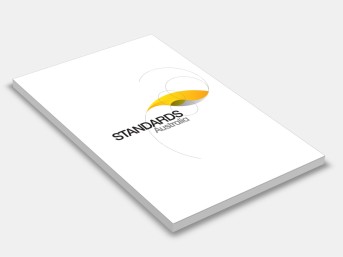AS 2118.1:2017 Automatic fire sprinkler systems, Part 1: General systems
Standards Australia
Supersedes: AS 2118.1-2006 AMDT 1 Automatic fire sprinkler systems, Part 1: General systems
Supersedes: AS 2118.1-2006 Automatic fire sprinkler systems, Part 1: General systems
Draft Designation: DR AS 2118.1:2016 CPAmended by: AS 2118.1:2017 Amd 1:2017 Automatic fire sprinkler systems, Part 1: General systems
Amended by: AS 2118.1:2017 Amd 2:2020 Automatic fire sprinkler systems, Part 1: General systems
Amended by: AS 2118.1:2017 Amd 3:2024 Automatic fire sprinkler systems, Part 1: General systems
This Standard was prepared by the Standards Australia Committee FP-004, Automatic Sprinkler Installations, to supersede AS 2118.1—2006.
This Standard incorporates Amendment No. 1 (December 2017), Amendment No. 2 (July 2020) and Amendment No. 3 (February 2024). The changes required by the Amendment are indicated in the text by a marginal bar and amendment number against the clause, note, table, figure or part thereof affected.
The objective of this edition is to include changes that reflect recent advances in technology and to refine the content for clarity and conciseness.
Changes to this edition are the following:
(a) Incorporation of amendments to the 2006 edition.
(b) Section 12—now Section 14, Hydraulic calculation methods.
(c) Significant changes to Section 3 concerning exposure protection, and to Section 5 relating to protection of concealed spaces.
(d) Section 9, Light Hazard class systems, entirely rewritten to include more useable and up-to-date parameters for the design of this class of system.
(e) New Sections 11, 12 and 13 (High Hazard).
(f) Expanded definitions clause.
(g) Inclusion of informative text for occupancy classification (Appendix A).
The revision to the AS 2118 suite of Standards has included Standards Australia’s requirements to keep product and installation Standards separate. The series comprises the following:
AS
2118 Automatic fire sprinkler systems
2118.1 Part 1: General systems (this Standard)
2118.2 Part 2: Drencher systems
2118.3 Part 3: Deluge
2118.4 Part 4: Sprinkler protection for accommodation buildings not exceeding four storeys in height
2118.5 Part 5: Home fire sprinkler systems
2118.6 Part 6: Combined sprinkler and hydrant systems in multistorey buildings
4118 Fire sprinkler systems
4118.1.1 Part 1.1: Components—Sprinklers and sprayers
4118.1.2 Part 1.2: Components—Alarm valves (wet)
4118.1.3 Part 1.3: Components—Water motor alarms
4118.1.4 Part 1.4: Components—Valve monitors
4118.1.5 Part 1.5: Components—Deluge and pre-action valves
4118.1.6 Part 1.6: Components—Stop valves and non-return valves
4118.1.7 Part 1.7: Components—Alarm valves (dry)
4118.1.8 Part 1.8: Components—Pressure reducing valves
4118.1.9 Part 1.9: Components—Accelerators and exhausters
4118.2.1 Part 2.1: Piping—General
The terms ‘normative’ and ‘informative’ have been used in this Standard to define the application of the appendix to which they apply. A ‘normative’ appendix is an integral part of a Standard, whereas an ‘informative’ appendix is only for information and guidance.
Originated as CA16-1939. Revised and redesignated, in part, as AS 2118.1-1978. Second edition 1982. Revised and redesignated, in part, as AS 2118.1-1995. Fourth edition 2017. Reissued incorporating Amendment No 1 (December 2017). Reissued incorporating Amendment No 2 (July 2020). Reissued incorporating Amendment No 3 (February 2024).
Automatic fire sprinkler systems provide an important level of fire protection to a building structure. Additionally, automatic fire sprinklers provide an important level of protection for the occupants of a building together with protection to the environment by minimizing the effects that a major structural fire could have. Sprinklers also safeguard against loss of plant, machinery, equipment and building contents generally as well as protecting a business by providing against loss of continuity of business operations. Sprinklers also conserve water during firefighting operations.
In modern buildings and indeed with older buildings that are being upgraded to meet the latest requirements in fire safety, there is need to consider other systems that impact on the function and operation of a sprinkler system. Other systems that can either interface with the sprinkler system, or be integrated in it, are automatic heat and smoke detectors, emergency warning and intercommunication systems and smoke control and air-handling systems. Hence, when designing sprinkler systems, it will be necessary to consider the interaction of sprinkler systems with other building fire safety systems in order to maximize protection and provide an optimal approach for the overall objectives of fire safety.
This Standard specifies requirements for the design, installation and commissioning of automatic fire sprinkler systems in buildings. It also provides for occupancy classification. This Standard does not provide requirements for the design or installation of water mist fire protection systems.
NOTE: For details of occupancy classification, see Appendix A.
Contents:
Section 1: Scope And General
Section 2: Classification Of Sprinkler Systems And Design Data
Section 3: Installation
Section 4: Water Supplies
Section 5: Spacing And Location Of Sprinklers
Section 6: Sprinkler And Multiple Controls
Section 7: Piping
Section 8: Valves, Ancillary Equipment And Baseline Data
Section 9: Light Hazard Class Systems
Section 10: Ordinary Hazard Class Systems
Section 11: High Hazard Class Systems
Section 12: Special Commodities
Section 13: Flammable And Combustible Liquids
Section 14: Hydraulic Calculation Of Sprinkler Systems
Appendix A: Occupancy Classifications
Appendix B: Orifice Plates
Appendix C: Water Supply Arrangements
Appendix D: Graphic Representation Of Hydraulic Characteristics
Appendix E: Aerosols—Supplementary Design Applications
Appendix F: Minor Works
Appendix G: Approval Documentation
Appendix H: Commissioning And Acceptance Testing
Appendix I: Example Of Form Of Completion Certificate
Automatic Sprinkler Installations.
FP-004
Association of Hydraulic Services Consultants Australia; Australasian Fire and Emergency Service Authorities Council; Australian Building Codes Board; Australian Chamber of Commerce and Industry; Bulky Goods Retailers Association; Consumers Federation of Australia; CSIRO; Department of Human Services (VIC); Engineers Australia; Fire Protection Association Australia; Insurance Council of Australia; National Fire Industry Association Australia.
